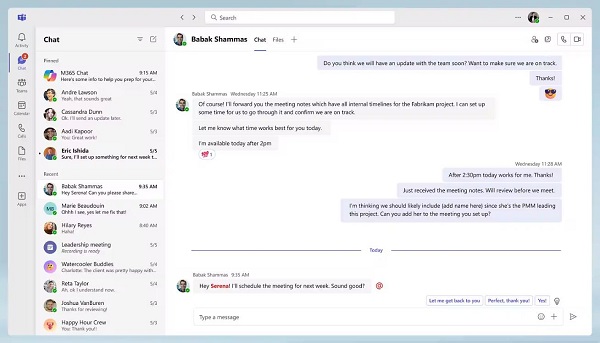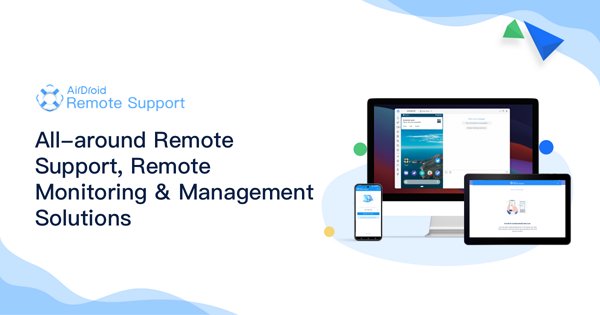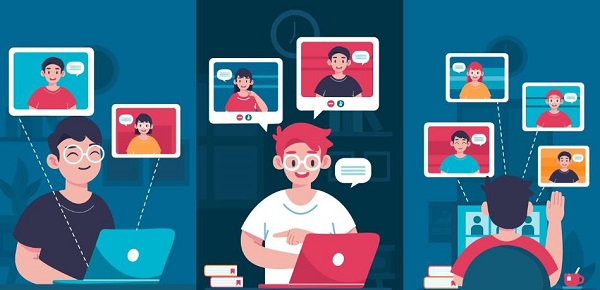12 Effective Tips for Facilitating Remote Team Communication
Remote team communication is exchanging information, ideas, and feedback among team members from different locations. It is essential for remote workers' collaboration, productivity, and alignment.
However, remote team communication poses many challenges, such as cultural differences, time zone differences, technical issues, and lack of nonverbal cues. Therefore, remote teams need to adopt effective strategies and tools to communicate clearly and efficiently with each other.
- Choose the Right Remote Communication Tools

- Define Standards for Personal Remote Communication
- Create Transparent Communication Guidelines
- Use Visual Communication Methods
- Organize Virtual Team Activities
- Enable Asynchronous Communication
- Improve Remote Onboarding Strategies
- Resist Micromanagement
- Create a Virtual Water Cooler Space
- Arrange Regular 1-on-1 Check-Ins
- Harmonize Correct Writing Format
- Collect and Listen to Employee Feedback
Part 1: What Is Remote Team Communication?
Remote team communication can be defined as any form of communication between team members who are not physically co-located. This includes email, instant messaging, video conferencing, phone calls, collaborative software, and social media.
Remote team communication can be synchronous or asynchronous, depending on whether the communication happens in real-time or with a delay. Synchronous communication suits urgent, complex, or collaborative tasks, while asynchronous communication is more flexible, convenient, and respectful of different work schedules and preferences.

Remote team communication has many benefits, such as:
- Reducing travel costs and environmental impact
- Increasing access to diverse talent and expertise
- Enhancing work-life balance and employee satisfaction
- Fostering creativity and innovation
- Improving decision-making and problem-solving
However, remote team communication also has many challenges, such as:
- Losing social connection and trust
- Misunderstanding messages and intentions
- Experiencing communication overload and fatigue
- Facing technical glitches and security risks
- Managing different expectations and work styles
Part 2: Tips for Facilitating Remote Team Communication
Remote team communication ensures productivity, collaboration, and trust among distributed workers. However, it can also pose challenges, such as a lack of face-to-face interaction, cultural differences, time zone differences, and technical issues. How can you overcome these challenges and facilitate effective remote team communication? Here are some tips to help you out.
1Choose the Right Remote Communication Tools
Remote teams have a variety of communication methods to choose from, such as sending messages to co-workers or communicating remotely with clients through communication channels such as instant messaging, email, and call centers. Collaboration software and video conferencing can also be used to communicate effectively.
Therefore, choosing the right remote communication tool is very important for remote teams. There are many types of remote communication tools available, but here are some of the most common ones:
Unified Communication Platform
A unified communication platform is a tool that integrates various communication channels, such as voice, video, chat, email, and social media, into one platform. This can help you streamline communication, reduce confusion, and enhance collaboration.

You can also use a unified communication platform to host meetings, webinars, conferences, and events, with features like screen sharing, recording, transcription, and polling. Slack, Microsoft Teams, Zoom, and Skype are well-known unified communication platforms.
Video Conferencing Software
Video conferencing software lets you discuss face-to-face with your remote team members, clients, or partners using your webcam and microphone. It can help you build rapport, trust, and engagement and convey non-verbal cues, such as facial terms, gestures, and tone of voice.
Video conferencing software can also help you conduct presentations, demonstrations, training, and interviews, with features such as whiteboard, annotation, breakout rooms, and Q&A. Some of the best video conferencing software are Google Meet, Cisco Webex, GoToMeeting, and BlueJeans.
Remote Support Software
Remote support software allows you to provide technical assistance to remote employees or customers without being physically present. This can save you time, money, and hassle and improve customer satisfaction and loyalty.
One of the best remote support software options is AirDroid Remote Support. It helps technicians solve technical problems encountered by employees working remotely and facilitates communication between teams and more efficient troubleshooting through live chat features. You can also use AirDroid Remote Support to share your screen, control the remote device, transfer files, and more.

Project Management Tools
Project management tools help you plan, organize, track, and report on your projects, tasks, and deadlines. They can also help you communicate with your team members, assign roles and responsibilities, share feedback, and monitor progress.
Some popular project management tools are Asana, Trello, Monday.com, and Basecamp. These tools offer various features, such as boards, lists, calendars, charts, integrations, and notifications, to help you manage your projects effectively and efficiently.
Remote Onboarding System
A remote onboarding system is a tool that helps you onboard your new hires remotely without compromising on the quality and effectiveness of the process. It can help you introduce your company culture, values, and vision and provide the necessary training, resources, and support. It can also help you collect and verify the required documents, forms, and signatures, as well as monitor and evaluate the performance and satisfaction of your new hires.
Some top remote onboarding systems are BambooHR, WorkBright, Zenefits, and Lessonly. These systems offer various features, such as workflows, checklists, templates, quizzes, and surveys, to help onboard your new hires smoothly and successfully.
2Define Standards for Personal Remote Communication
Another critical factor for remote team communication is clear and consistent standards for personal remote communication. This means setting expectations and guidelines for how, when, and why you and your team members communicate with each other. For example, you can define:
- The preferred communication channels and tools for different purposes and situations, such as email, chat, phone, or video
- The response time and frequency for each communication channel and tool, such as within 24 hours for email, within 2 hours for chat, or once a week for video
- The communication etiquette and style for each communication channel and tool, such as using formal or informal language, using emojis or not, or using video or audio only
- The communication availability and schedule for each team member, such as their working hours, time zone, breaks, and holidays

By defining these standards, you can ensure that your remote team communication is efficient, effective, and respectful and avoid misunderstandings, conflicts, and frustrations.
3Create Transparent Communication Guidelines
In addition to defining standards for personal remote communication, you must create transparent communication guidelines for your team. This means sharing and documenting all the relevant information and updates that affect your team's work and goals, such as:
- The vision, mission, and values of your company and team
- The roles, responsibilities, and anticipations of each team member
- The objectives, strategies, and plans of your projects and tasks
- The progress, achievements, and challenges of your projects and tasks
- The feedback, recognition, and appreciation of your team members
- The issues, problems, and solutions of your team's work
- The changes, improvements, and opportunities in your team's work

By creating these transparent communication guidelines, you can ensure that your remote team communication is aligned, informed, and engaged and foster trust, collaboration, and accountability.
4Use Visual Communication Methods
One of the best ways to enhance your remote team communication is to use visual communication methods, such as images, videos, graphs, charts, diagrams, and icons. Visual communication methods can help you:
- Capture and retain the attention and interest of your audience
- Simplify and clarify complex and abstract concepts and ideas
- Highlight and emphasize essential and relevant points and details
- Illustrate and demonstrate processes and procedures
- Compare and contrast data and information
- Inspire and motivate action and change

You can use visual communication methods in various ways, such as in your presentations, reports, documents, emails, chats, and videos. You can also use multiple tools, such as Canva, Piktochart, Visme, and Loom, to create and share your visual communication materials.
5Organize Virtual Team Activities
Another great way to improve remote team contact is to organize virtual team activities, such as games, quizzes, contests, and challenges. Virtual team activities can help you:
- Break the ice and build rapport among your team members
- Boost the morale and mood of your team members
- Strengthen the bond and trust among your team members
- Enhance the creativity and innovation of your team members
- Increase the fun and enjoyment of your team members

You can organize virtual team activities in various ways, such as during meetings, breaks, or social events. You can also use various tools, such as Kahoot, Jackbox Games, QuizBreaker, and Water Cooler Trivia, to host and play your virtual team activities.
6Enable Asynchronous Communication
One of the most challenging aspects of remote team communication is dealing with time zone differences. Time zone differences can cause delays, disruptions, and inconveniences in your communication, as well as affect your team members' work-life balance and well-being.
To overcome this challenge, you must enable asynchronous communication, which means communicating without expecting an immediate response or presence. Asynchronous communication can help you:
- Respect and accommodate the different schedules and preferences of your team members
- Reduce the pressure and stress on your team members
- Improve the productivity of your team members
- Encourage the autonomy and flexibility of your team members
- Improve the quality and thoughtfulness of your communication

You can enable asynchronous communication in various ways, such as using email, chat, or video messages instead of phone or video calls for non-urgent and non-critical matters. You can also use various tools like Slack, Microsoft Teams, Zoom, and Skype to support your asynchronous communication.
7Improve Remote Onboarding Strategies
One of the most crucial factors for remote team communication is having a smooth and successful remote onboarding process. The remote onboarding process integrates your new hires into your team and company and provides them with the necessary training, resources, and support. The remote onboarding process can help you:
- Introduce and welcome your new hires to your team and company culture, values, and vision
- Explain and clarify the roles, responsibilities, and expectations of your new hires
- Train and equip your new hires with the skills, knowledge, and tools they must to complete their work
- Monitor and evaluate the implementation and satisfaction of your new hires
- Connect and engage your new hires with your existing team members and other stakeholders

You can improve your remote onboarding strategies in various ways, such as creating a remote onboarding checklist, assigning a remote onboarding buddy, scheduling regular check-ins and feedback sessions, and organizing virtual team activities.
8Resist Micromanagement
One of the worst things you can do for remote team communication is micromanaging your team members. Micromanagement means controlling and monitoring every aspect of your team members' work, such as their tasks, time, methods, and results. Micromanagement can harm your remote team communication, as it can:
- Undermine and erode the trust and respect between you and your team members
- Reduce and limit the autonomy and flexibility of your team members
- Increase and amplify the pressure and stress of your team members
- Lower and diminish the morale and motivation of your team members
- Hinder and stifle the creativity and innovation of your team members

To avoid micromanagement, you need to adopt a more supportive and empowering leadership style, such as:
- Setting clear and realistic objectives and expectations for your team members
- Providing regular and constructive feedback and recognition for your team members
- Delegating tasks and obligations to your team members based on their skills and interests
- Encouraging and facilitating collaboration and communication among your team members
- Trusting and respecting your team members to do their work and make decisions
9Create a Virtual Water Cooler Space
One of remote team communication's most beneficial aspects is having a more relaxed virtual water space. Virtual water is an excellent space that lets you and your team members chat and socialize informally without any work-related agenda or pressure. A virtual water cooler space can help you:
- Build and maintain personal and professional connections with your team members
- Learn and discover more about your team members' backgrounds, interests, and hobbies
- Share and exchange ideas, opinions, and experiences with your team members
- Support and empathize with your team members' challenges and difficulties
- Celebrate and appreciate your team members' achievements and milestones

You can create a virtual water cooler space in various ways, such as having a dedicated chat channel, group, or room where you and your team members can talk about anything and everything, such as sports, movies, music, books, or memes. You can also use various tools, such as Donut, Icebreaker, Watercooler, and RandomCoffee, to facilitate and automate your virtual water cooler conversations.
10Arrange Regular 1-on-1 Check-Ins
Another essential aspect of remote team communication is having regular 1-on-1 check-ins with your team members. 1-on-1 check-ins are meetings where you and your team members can have a private and personal conversation without distractions or interruptions. 1-on-1 check-ins can help you:
- Understand and address the needs, concerns, and expectations of your team members
- Provide and receive feedback, recognition, and appreciation for your team members
- Coach and mentor your team fellows to improve their skills, knowledge, and performance
- Resolve and prevent any conflicts, issues, or problems with your team members
- Motivate and inspire your team fellows to reach their goals and potential

You can arrange regular 1-on-1 check-ins in various ways, such as scheduling them at a fixed time and frequency, such as weekly, biweekly, or monthly, depending on your team members' availability and preference. You can also use tools like Lattice, 15Five, Fellow, and Soapbox to plan and conduct your 1-on-1 check-ins.
11Harmonize Correct Writing Format
One of the most critical skills for remote team communication is having a correct and consistent writing format. Writing format refers to the rules and conventions governing how you write and present your written communication, such as grammar, spelling, punctuation, capitalization, and style. Writing format can affect your remote team communication, as it can:
- Enhance and improve the clarity and readability of your written communication
- Avoid and eliminate any confusion and misunderstanding in your written communication
- Convey and reflect your professionalism and credibility
- Respect and comply with the standards and expectations
- Impress and influence your audience and stakeholders

To harmonize your writing format, you need to follow and apply some best practices, such as:
- Using simple and concise language and sentences
- Using an active and positive voice and tone
- Using correct and consistent grammar, spelling, punctuation, and capitalization
- Using appropriate and relevant style and format, such as headings, bullet points, and bolding
- Using tools such as Grammarly, Hemingway, ProWritingAid, and Wordy to check and edit your writing format
12Collect and Listen to Employee Feedback
One of the most valuable remote team communication sources is employee feedback. Employee feedback is the information and opinions your team members share about their work experience, such as their satisfaction, engagement, performance, and challenges. Employee feedback can help you:
- Measure and evaluate the efficacy and efficiency of your remote team communication
- Identify and address the strengths and drawbacks
- Implement and monitor the changes and improvements
- Recognize and reward the achievements and assistance of your team members
- Involve and empower your team members in the decision-making and problem-solving processes

To collect and listen to employee feedback, you need to use some methods and tools, such as:
- Conducting surveys and polls using tools such as SurveyMonkey, Typeform, Google Forms, and Poll Everywhere
- Hosting focus groups and interviews using tools such as Zoom, Skype, Google Meet, and Cisco Webex
- Creating suggestion boxes and forums using tools such as Slack, Microsoft Teams, Discourse, and IdeaScale
- Analyzing data and metrics using tools such as Google Analytics, HubSpot, Hotjar, and Mixpanel
Part 3: Why Effective Remote Communication Is Important in Teams
Effective remote communication is important in teams because it can:
- Improve team productivity and performance, as it helps team members coordinate their tasks, share their progress, and solve problems.
- Enhance team collaboration and innovation, as it helps team members exchange their ideas, opinions, and feedback and learn from each other.
- Strengthen team culture and engagement, as it helps team members build and maintain their relationships, trust, and morale.
- Support team diversity and inclusion, as it helps team members respect and appreciate their differences and leverage their strengths and talents.
Effective remote communication is a skill and a mindset that requires team members to be proactive, responsive, respectful, and empathetic. By following the tips we discussed in this article, you and your team can communicate more effectively and efficiently and enjoy the benefits and opportunities of working remotely.
Conclusion
In 2024, mastering remote team communication is crucial for collaborative success. It involves sharing information and ideas among team members working from different locations. While this fosters diverse talent access and work-life balance, challenges like cultural differences and technical glitches arise.
To navigate these hurdles, embracing effective strategies is essential. Overall, prioritizing effective remote communication boosts productivity and enhances team collaboration, culture, and inclusivity in the evolving work landscape.






Leave a Reply.